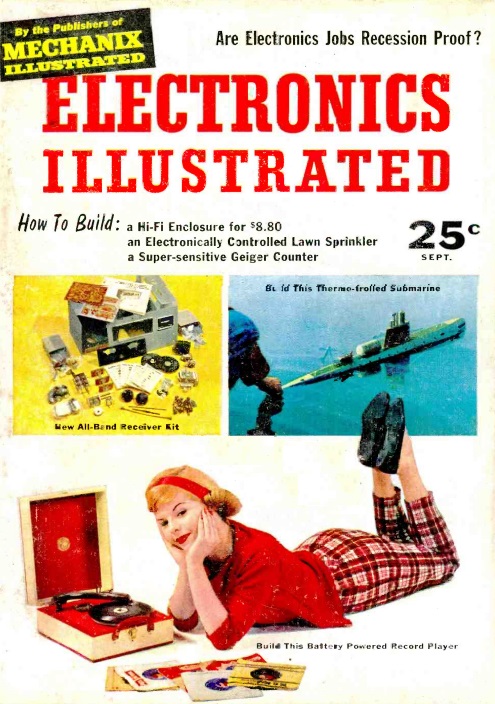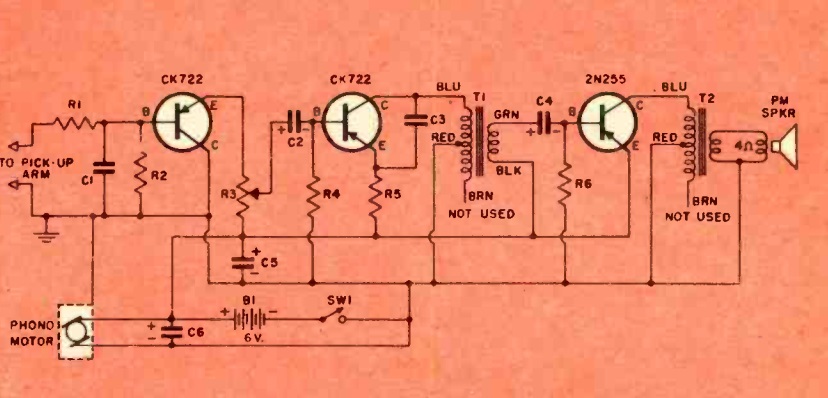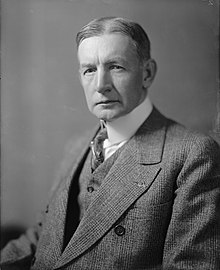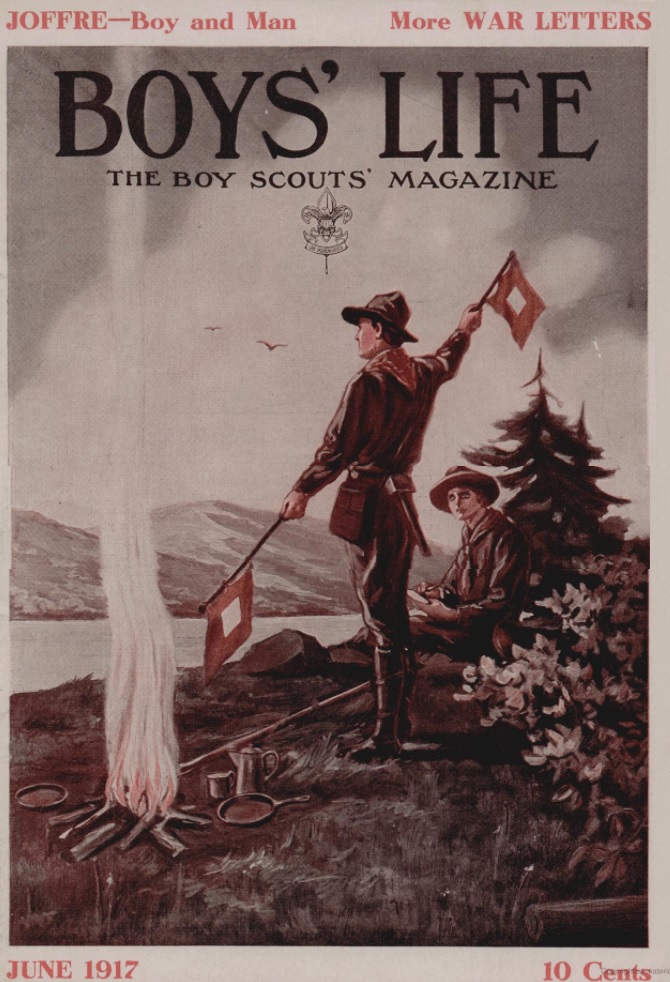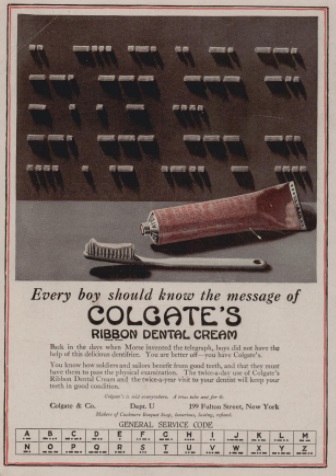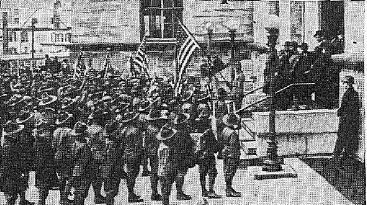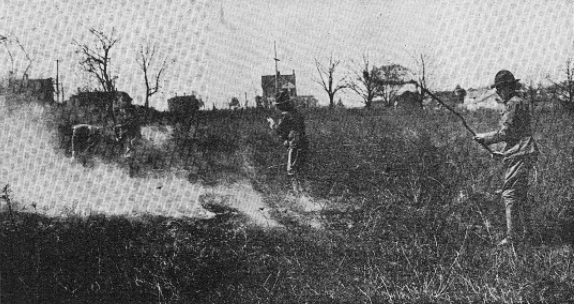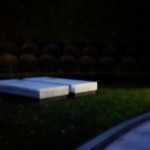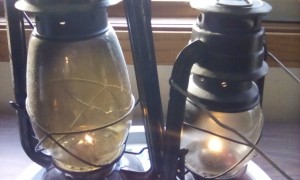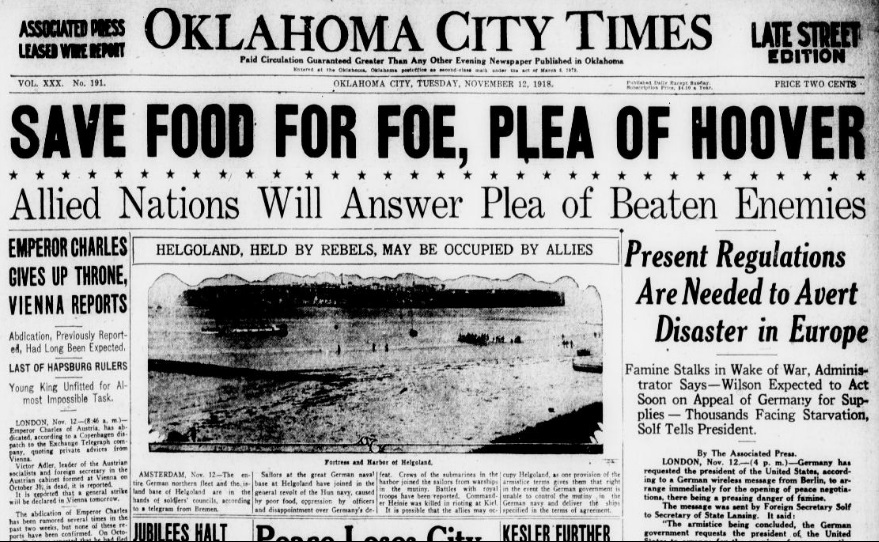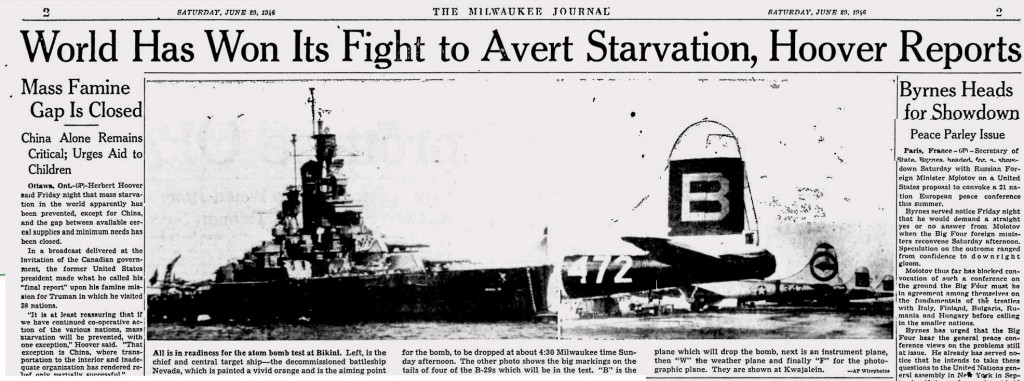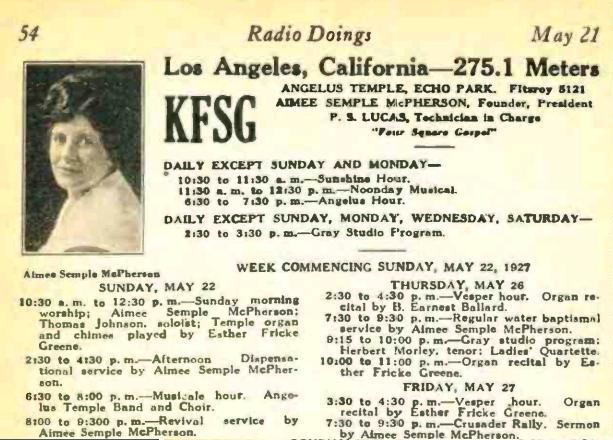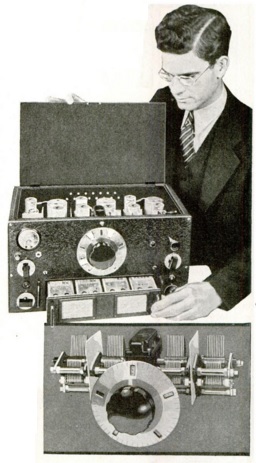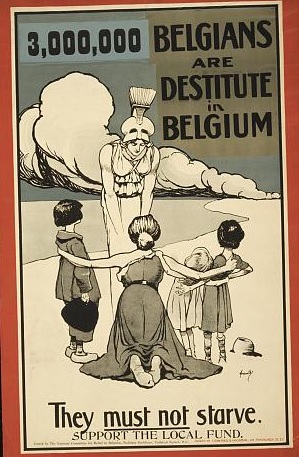I heard an interesting lecture by Reformed theologian and church historian Professor W. Robert Godfrey about the life of Pentecostal evangelist and media celebrity Aimee Semple McPherson (1890-1944).
Sister Aimee, as she was known, was a flamboyant figure and founder of the International Church of the Foursquare Gospel and Angelus Temple in Los Angeles. Inspired in large part by the Salvation Army (indeed, she at one point pondered founding the Salvation Navy), she was a founder of Pentacotalism, and what Godfrey called a “prototypical example of Pentacostalism.”
Touched on in Godfrey’s lecture was the role that McPherson played in the early days of broadcasting. She was the founder of KFSG, whose call letters stood for “Four Square Gospel.” It was profiled in the June 1931 issue of Radio Doings, a West Coast program guide.
The article noted that the station had sprung up almost over night from one of the first churches to step into the world of radio. In addition to the church’s main auditorium, seating 5300 people, programs could originate from three studios. Music played an important part. It noted that Esther Fricke, the Temple organist, had broadcast 1528 organ recitals. McPherson was quoted:
Realizing that music is the universal language of all nations and that the soul finds expression in the creation of melody, I am vitally interested in the perpetuity of celestial strains. I have, therefore, devoted much of my time during my recent illness pouring forth from my own soul in drama and song the beautiful old stories of the Bible. I t is my cherished hope and fondest dream to set eventually all of these to music.
The humanitarian work done by McPherson was real, and is noted in the Radio Doings article:
In the main entrance of the Temple stands a life boat and into its capacious depths the Angelus Temple members and friends constantly pour packages of groceries, food, clothing and all the numerous articles of which poor families stand in need -from wheel chairs to baby clothes, from bedsteads to cook – stoves. Regardless of creed or color all who are in need are aided.
Professor Godfrey notes in his lecture that McPherson was in many cases the only source of aid to illegal immigrants, who had no recourse to government welfare.
KFSG was initially assigned to 1080 kHz, relatively clear of the other Los Angeles stations, KFI 640 kHz, KHJ 740 kHz, and KNX 890 kHz. However, interference complaints were received, and its likely that KFSG (and probably other stations) weren’t scrupulously tending to their assigned wavelength. After the Department of Commerce contacted McPherson, she reportedly fired off the following telegram to Commerce Secretary Herbert Hoover:
PLEASE ORDER YOUR MINIONS OF SATAN TO LEAVE MY STATION ALONE. YOU CANNOT EXPECT THE ALMIGHTY TO ABIDE BY YOUR WAVELENGTH NONSENSE. WHEN I OFFER MY PRAYERS TO HIM, I MUST FIT IN WITH HIS WAVE RECEPTION. OPEN THIS STATION AT ONCE!
Update: I received an e-mail fro Los Angeles radio Historian Jim Hilliker, whose 2003 article about KFSG is linked below. In 2011, he wrote an updated article (which my initial Google search about KFSG for some reason did not reveal) in which he makes a very convincing case that this telegram is a myth.
President Hoover first mentioned the telegram in 1945 in a radio speech, where he attributed it only to an unnamed female “evangelist in a certain city.” The story was repeated in his 1952 memoirs with McPherson named. Even though Hoover is the Official Favorite Former President of OneTubeRadio.com, Hilliker made an exhaustive search looking for any documentation supporting the story. If regulatory action had been taken against the station, then there would have been a public record, and it would have been published in the Radio Service Bulletin. But neither the Bulletin nor the station’s license file contain any such reference.
After reading Hilliker’s updated article, I’m inclined to believe that Hoover’s recollection of this incident is a false memory.
The June 1925 issue of Radio In The Home magazine touched on the wavelength dispute, but added a positive spin:
When KFSG first went on the air, thousands of fans registered emphatic and vigorous protest because some nonselective sets would not enable them to tune out the new station. But that’s all ancient history now. Most of the people wouldn’t tune KFSG out now if they could.
This is a personal narrative of a church that not only brings the people to it by the thousands, but it also goes to the people by the hundreds of thousands in their homes, the rugged fastnesses of the mountain peaks, the whirling sands of the desert, the sluggishly flowing river houseboat, the tramp steamer on the high seas–everywhere, in fact, that the Word of God can go.
Aimee Semple McPherson, evangelist extraordinary, knows human psychology. Or, more properly speaking perhaps, she knows the practical application of everyday psychology. Of course, her programs include masterful benedictions, messages of cheer and inspiration, powerful and penetrating sermons, testimonials delivered with a punch and vigor, and healing services of faith and power.
In May 1926, McPherson disappeared from Venice Beach, California. It was initially thought that she had drowned, but as a memorial service was being prepared, a phone call came in from McPherson, who reported being kidnapped. She was found in Agua Prieta, Mexico, but journalists were skeptical, since her clothes showed no wear after her escape and walk through the desert. However, this was disputed by those in Douglas, Arizona, where she had been taken to convalesce.
The truth of what happened will never be known, but there were reports of her being seen along the California coast in the company of KFSG engineer Kenneth G. Ormiston.
Despite the considerable theological differences, and despite much theological criticism, Godfrey concludes, “she was not a ‘prosperity preacher….’ The focus for most of her ministry was on preaching the truth. What makes me appreciative of Sister–not that I agree with her theology–but what makes me sympathetic on a certain level is that not only was she capable of and did preach the Gospel, but she had a real heart for the poor, and I think religious charlatans don’t usually have much of a heart for the poor.”
More history of the station can be found at this 2003 article by Jim Hilliker.
Read More At Amazon
Click Here For Today’s Ripley’s Believe It Or Not Cartoon

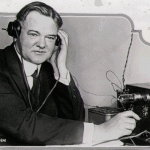 There is an interesting post today at the blog of the Herbert Hoover Library and Museum about Herbert Hoover and the history of radio. The author is Thomas Schwartz, the director of the museum.
There is an interesting post today at the blog of the Herbert Hoover Library and Museum about Herbert Hoover and the history of radio. The author is Thomas Schwartz, the director of the museum.

